We are in conversation with 17-year-old Samidha Patel from Vadodara who recently set the fastest time on a cycle from Kashmir to Kanyakumari and earning herself a Guinness World Record!
In an aspirational middle-class India, the first response to anything cycling-related is met with a certain level of bafflement, disdain, and sometimes, awe. Perhaps it is the position that the humble machine occupies in our imagination. We have relegated it to being that thing ‘children do’. But every once in a while, people achieve things which force us to sit back, pay attention, and wonder; how!
Between January 16 and February 1 of this year, Samidha Patel cycled from Kashmir to Kanyakumari (K2K). In less than seventeen days, Samidha covered the North-South stretch of the country as a solo female cyclist. What makes her achievement even more impressive is that after finishing her ride, she proceeded to give her 12th board exams. Samidha was 17 at the time!
We caught up with her a couple of months after that monumental achievement.
What compelled a girl from Vadodara to embark on this unbelievable adventure?
Turns out, this was not her first time. When she was 13, she cycled the treacherously winding Manali-Khardung La route. A couple of years later, she rode from Porbandar to the Statue of Unity in Kevadia, Gujarat. As she knocked out these routes at an early age, she was prepping for something much more daunting and ambitious.
Finding Inspiration and Support
The detailed first-person account of her trip makes for an interesting read. Check it out on the WUCA Website. An excerpt below:
“I was drawn to endurance cycling since I was 12-13 years old…In the meanwhile I came across Mr. Adil Teli’s K2K record. I was highly inspired. Now I wanted to do better than this record! Pardon my age, I got a bit over-zealous (…haha). I expressed my desire to my mentor. Without discouraging me, he said, record or no record, K2K is a solid distance to endure, even to dream about it requires a lot of courage. It will need serious training and commitment, both. And that is how I started training for it, around two years ago. (Mr. Adil’s record was still on my mind for a long time…hahaha)”
Even more interesting than her daily saddle adventures, was her mental processes, supporting ecosystem, and the sheer bodily experience of the ride. When it comes to family support, Samidha comes from a setup which is not alien to the outdoors. Her father, Kalpesh, regularly organises trips in the Himalayas. Even though he and his wife, Sheetal Patel, were initially concerned about the scale of Samidha’s goal, they eventually came around. Both of them were part of the three-person crew which accompanied Samidha on her K2K ride. They acted as emotional and logistical anchors on her journey across the nation.
Her second inroad with the endurance cycling circles in the country was her coach and mentor, Sumit Patil. “He told me it was possible, but it would take a lot of work. We started small, doing 50 kms a day. Gradually, we increased it to 100, then 200, and so on. I was practising indoors on a stationary trainer, and outside on the streets of Vadodara.”
Land, Food, and Machine
On a ride like this, there are too many things you experience first-hand. Many feel significant in the moment, but drift from memory at the end of the day. Some things however, are far too momentous and we keep coming back to them again and again.
“I had to change my diet significantly while preparing myself. Lots of muesli with milk, paneer, dal, ghee, and peanut butter.” And of course, khichdi — her constant companion since her very first ride from Manali to Khardung La. The team jokingly termed it ‘Khichdi power’ which gave her internal gumption to push forward through the inclement climbs during that ride in 2018.
The K2K was done on a Polygon Stratos 5 Road Bike with the singular modification done to the handlebar for her bike fit. Samidha told me how she fell off the bike a couple of times during training, given her unfamiliarity with clipless pedals. Her evolving relationship with her machine continued during the ride as well. During the Kashmir leg of the ride, the tightness of the gloves, combined with the bitterly cold temperatures, reduced the blood circulation in her hands. There she was, at the very beginning of her grand project, descending with numb hands and limited control over the brakes.
“I couldn’t apply brakes because of numb hands. The crew car couldn’t help me. At one point there was a truck approaching me from behind and one in front of me. Somehow, I slid through a tight spot between the two and got out safely. After that, I took off the gloves.”
Seeing the country
Her passage through the country was also a firsthand experience with the varied and starkly different geographies of the land. Samidha rode through winding passes, steep inclines, impenetrable fog, biting cold, sweltering heat, stifling humidity, and some rain as well. Within her are contained flashes of the North-South Road and its myriad tendencies. And it has certainly taught her a lot.
“Once I told my father, roads join state to state seamlessly. This should be the same with the hearts of people who live here.” Samidha observed with the astuteness that comes from experiencing the road up-close. Immediately after that, she told me a perfectly innocent story about her tryst with the sun.
“One morning, there was no sun. It was foggy everywhere. So, I prayed and asked Suraj Dada to come out soon. After a while, we caught the sun.”
Even as she described it, it sounded well and straightforward. It is anything but. More than physical prowess, what is key on a trip like this is mental fortitude. And it was impressive listening to Samidha narrate even her struggles with an air of head strong determination.
“Gradual inclines are the worst. You don’t see it, but your legs feel it. I even cried at times. Then, Sumit sir would point out how much I had already climbed and exhort me to keep going. I remember Kannad Ghat in Maharashtra was particularly difficult. If I had stopped, I wouldn’t have been able to start. So, I kept going. My feet didn’t touch the ground till I crossed the ghat.”
Why not just give up?
“I kept telling myself — nothing but Kanyakumari. In the Bhagavad Gita, we are told to focus on our karma. My karma, my task, was to keep pedalling. That is what I did; pedal and pedal and pedal.”
In the process of achieving her K2K dream, Samidha also set the City-to-City record between Srinagar to Bengaluru. She rode for 24 hours leading up to the record. Interestingly enough, their primary concern was something else entirely.
“I was told to avoid the Bengaluru traffic. I would get Abhimanyued if I caught the morning rush. So, I cycled non-stop to reach Vidhan Soudha, Bengaluru, at 5 am and left as soon as possible.” she said in an amused tone.
After Bengaluru, another member accompanied them with an additional car. The single addition of a person streamlined the process for everyone, especially for the three tired souls in the car. Their tasks were clearly divided — two crew members trailing Samidha as she rode, while her father and mother would ride ahead and prepare for their arrival.
The final 100 km could have gone either way. Samidha could have crawled to the finish line, and no one could have said a single adverse thing about her performance.
“She didn’t ride. She flew the last 100 km. I don’t know how she did it, but she flew.” Kalpesh exclaimed as he recounted that glorious moment.
“Of course I was tired. I was very tired. But there was joy and relief. And I wanted to be done with it. So, I pushed myself hard.” Samidha chimed in enthusiastically.
Karma and Many Names
Her karma was to keep pedalling, and so she did. Samidha’s record stands at 16 days, 9 hours, 21 minutes from Lal Chowk, Srinagar to Kanyakumari. She has also collected monikers — Sanju Baba, Milkha Singh, Chitti — all of which will make sense to readers who get the references.
Samidha’s parents shed more light on the 17-year old’s emotional core.
“She has been doing surya namaskar since she was 5 years old. Samidha won’t even eat till she’s done her morning exercises. She also follows the teaching of Pandurang Shastri Athavale’s Swadhyaya Parivar. That is what keeps her going, no matter how difficult it gets.”
As for what the future holds, Samidha wants to participate in races and represent India at the international stage. It felt a bit odd when I asked her for any advice she may have for anyone wanting to take up challenges. But her response was calm and confident.
“Believe in yourself. You can do anything. You need willpower, determination, and patience. Be calm and focused. Eat healthy and be disciplined with your food choices.”
At the very end, Samidha said she wanted to add something. I don’t know if she had been awkward to mention it to me earlier, or whether the thought flashed in her mind just then, but I am glad she prolonged our conversation.
“I want to credit my cycle as well. It supported me throughout the ride. It didn’t break down or anything. There wasn’t a single puncture.”
Her ride was an extraordinary symbiosis of human spirit and machine.
Sirus Libeiro is a Mumbai-based cyclist, is an ardent commuter in that bustling city, as well as having undertaken a few tough bicycle tours in the Himalayas himself. You can read other articles by him here and here.



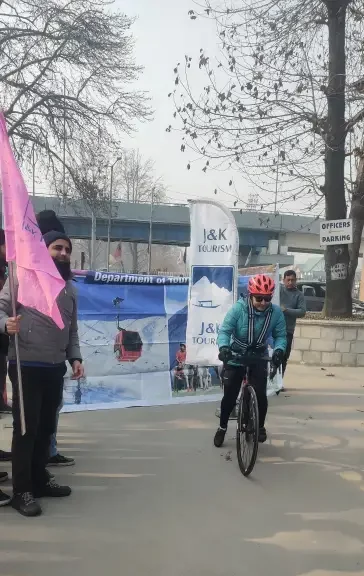
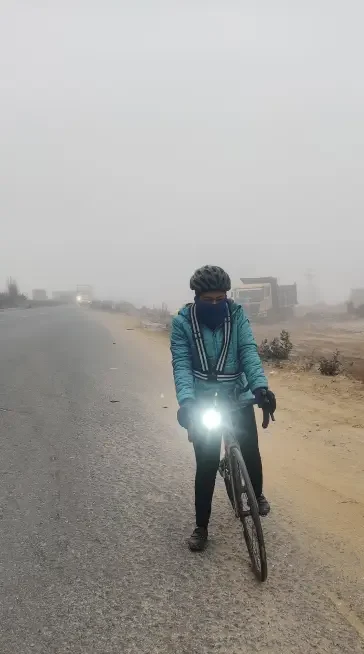
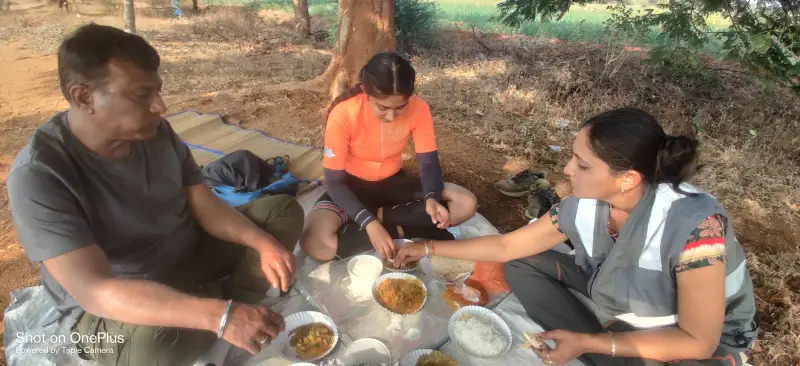
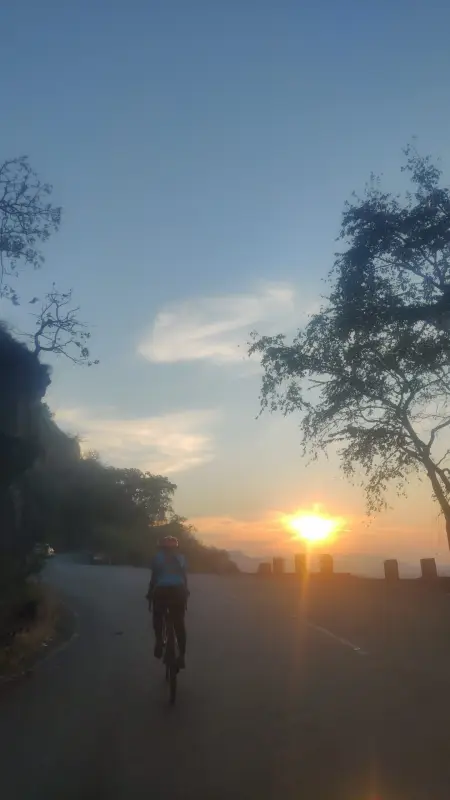
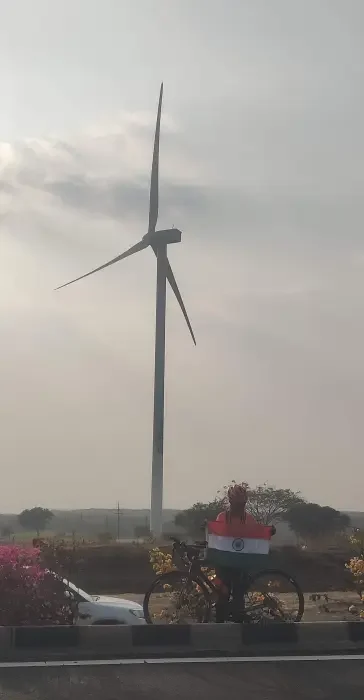
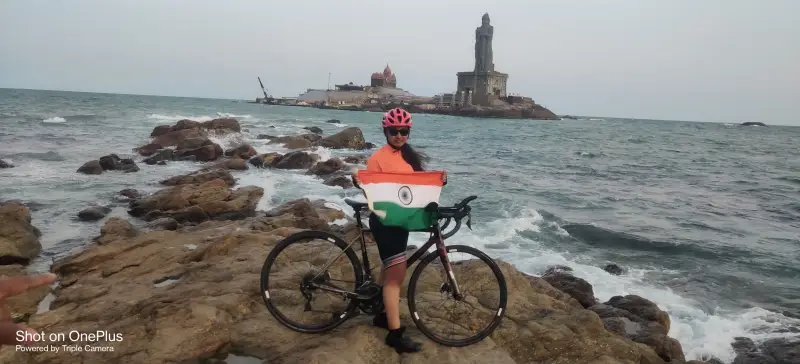
Interesting story at such a young age, which is what really stands out about this story. However, the picture quality wasn’t up to standard.
Also. can it really be called a solo ride when you have two back up vehicles? Such adventures seem to be the domain of those with deep pockets.
We should look to cycling as in the Netherlands where the Prime Minister, when demitting office after 10 years, rode into the sunset on a cycle.
Thank you for your comment.
This was a record setting ride, not a travel experience. ‘Picture quality’ isn’t the goal of such ride, but to reach the destination in the least amount of time to set a record.
The record books use the phrase ‘solo’ for such rides. Because the rider is solo, to differentiate it from records set in groups. There is a big difference in drafting behind fellow cyclists in a group and facing the headwinds all on your own strength and energy. Ones support cars cannot help in this regard.
Such adventures require considerable funds. But to assume that it is undertaken by people with ‘deep pockets’ is incorrect. It is done by people who are willing to sacrifice expenses in other domains to pursue their passion. That said, cycling is an expensive sport.
Cycling isn’t just limited to how the Prime Minister of the Netherlands commutes on his bicycle. Cycling encompasses a much larger group of people. From commuters to athletes to adventurers to travellers to recreational riders. Narrowing down the definition of a cyclist to just one is doing a deep disservice to cycling.
At CyclingMonks we have constantly tried to break down these barriers of narrow definitions of cyclists to treat everybody as just a ‘cyclist’…